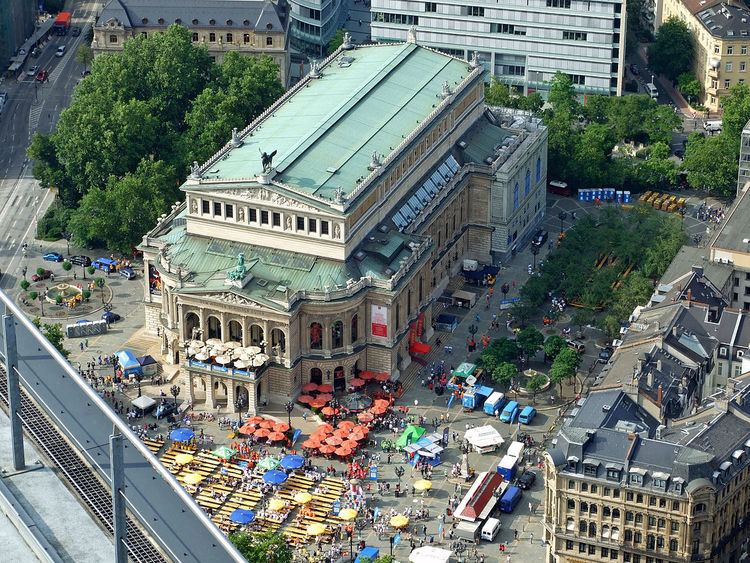Opened 1981 Phone +49 69 13400 | Height 34 m Architectural style Renaissance architecture | |
 | ||
Address Opernplatz 1, 60313 Frankfurt am Main, Germany Similar Opernplatz, Main Tower, Festhalle Frankfurt Profiles | ||
Alte oper backstage daniil trifonov
The original opera house in Frankfurt is now the Alte Oper (Old Opera), a concert hall and former opera house in Frankfurt am Main, Germany. It was inaugurated in 1880 but destroyed by bombs in 1944. It was rebuilt, slowly, in the 1970s, opening again in 1981. Many important operas were performed for the first time in Frankfurt, including Carl Orff's Carmina Burana in 1937.
Contents
The square in front of the building is known as Opernplatz (Opera Square). The Alte Oper is located in the inner city district, Innenstadt, within the banking district Bankenviertel.
Frankfurt Opera is now in a modern building nearby, completed in 1951, which it shares with a theatre company.
Inauguration
The building was designed by the Berlin architect Richard Lucae, financed by the citizens of Frankfurt and built by Philipp Holzmann. Construction began in 1873. It opened on October 20, 1880. Among the guests was Kaiser Wilhelm I of Germany, who was impressed and said: Das könnte ich mir in Berlin nicht erlauben. (I couldn't permit myself this sort of thing in Berlin.)
The citizens of Frankfurt, who had to finance the structure (initial estimate two million marks), were rather sceptical at first. Alluding to the inscription on the frieze
"Dem Wahren, Schönen, Guten", ("To the true, the beautiful, the good")The folkloristic Frankfurt poet Adolf Stoltze wrote, in his best Hessian dialect:
Dem Wahre, Scheene, Gute, die Berjerschaft muß blute. (To the true, the beautiful, the good, the citizenry must bleed.)Post WWII
The Alte Oper was almost completely destroyed by bombs during World War II in 1944 (only some of the outside walls and façades survived). In the 1960s the city magistrate planned to build a modern office building on the site. The then Minister of Economy in Hessen Rudi Arndt, earned the nickname "Dynamit-Rudi" (Dynamite Rudi) when he proposed to blow up "Germany's most beautiful ruin" with "a little dynamite". Arndt later said that this was not meant seriously.
A citizen's initiative campaigned for reconstruction funds after 1953 and collected 15 million DM. It ended costing c. DM160, and the building was reopened on August 28, 1981, to the sounds of Gustav Mahler's Symphony No. 8, the "Symphony of a Thousand". A live recording of that concert conducted by Michael Gielen is available on CD.
The Alte Oper has:
